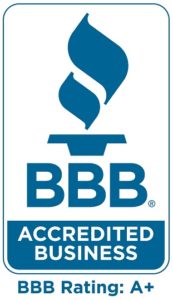As Chicagoland residents, we’re no strangers to brutally cold winters. But extreme temperatures shouldn’t be seeping into your home, causing discomfort and sky-high energy bills. Preparing your home for winter through proper insulation and air sealing—a process known as weatherization—can make a significant difference in your comfort, energy efficiency, and indoor air quality.
At ARC Insulation, we’ve helped over 30,000 homes since 1993 create living spaces that stand up to harsh winters. Here’s a glimpse into The ARC Way and how we can help you stay cozy this season:
1. Insulate Your Attic
Attic insulation plays a crucial role in your home’s winter performance:
- Prevents heat loss, keeping your home warm and cozy
- Reduces strain on your heating system, potentially lowering your energy costs
- Eliminates cold spots and drafts for even comfort throughout your home
- Helps prevent ice dams, protecting your roof’s structural integrity
Signs your attic insulation needs to be upgraded include high energy bills, ice dams, stuffy or chilly upstairs rooms, and indoor drafts.
2. Don’t Overlook Your Basement
A well-insulated basement offers winter protection for your home:
- Minimizes cold air infiltration, contributing to whole-home energy efficiency
- Controls moisture, improving indoor air quality and reducing your risk of mold growth
- Creates a more comfortable living space, eliminating cold floors
Signs your basement needs attention include dampness, musty odors, and uncomfortable temperatures.
3. Seal Air Leaks
Air leaks can undermine even the best insulation. Our air sealing and Aeroseal:
- Prevent cold air from entering in the winter and warm air from entering in the summer
- Enhance indoor air quality, blocking pollutants, pests, and excess moisture
- Increases overall home comfort, eliminating drafts and maintaining consistent temperatures
Signs you have significant air leaks include drafty rooms, high energy bills, inconsistent temperatures, and increased allergy symptoms.
4. Get an Energy Assessment
Every home is unique, and so are its winter preparation needs. During an energy assessment with ARC Insulation, our team:
- Evaluates your home’s current insulation and air sealing
- Identifies problem areas contributing to energy loss and discomfort
- Uses advanced techniques like thermal imaging and blower door testing to locate air leaks and underinsulated areas
- Provides a customized plan to improve your home’s winter performance
Get Winter-Ready with ARC Insulation
Don’t wait for the first cold snap to prepare your home for winter. We offer expert insulation installation backed by decades of experience. We’re also knowledgeable on what rebates and incentives are currently available to Chicagoland homeowners for insulation upgrades and can help you take advantage of savings. Whether you’re experiencing comfort issues in your home or looking to stay ahead of preparations, our team can create a tailored plan to keep your home warm, efficient, and healthy all winter long.














